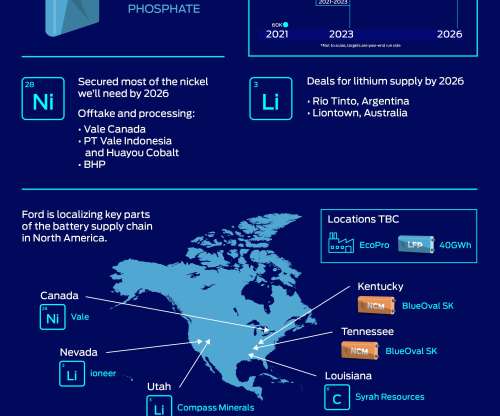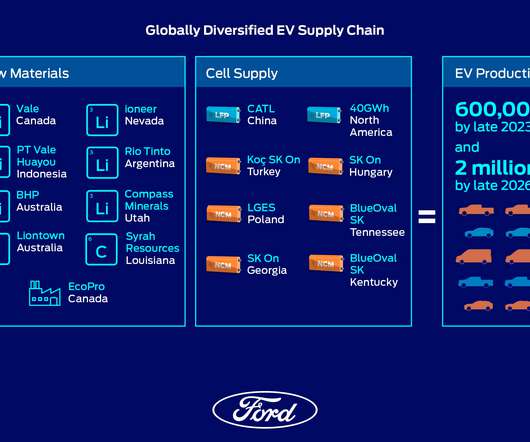Ford, Rio Tinto sign MOU for battery and low-carbon materials supply to support net-zero future
Green Car Congress
JULY 22, 2022
Ford Motor Company and Rio Tinto have signed a non-binding global memorandum of understanding (MOU) jointly to develop more sustainable and secure supply chains for battery and low-carbon materials to be used in Ford vehicles. It has potential to produce battery-grade lithium carbonate with one of the lowest carbon footprints in the industry.















Let's personalize your content